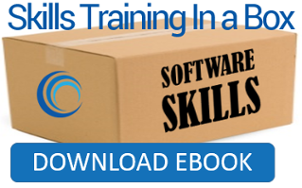 For years I have been a big fan of First, Break All the Rules by Marcus Buckingham and Curt Coffman. I love that they started with data from more than 1 million Gallup surveys and worked intently to find what the data would reveal.
For years I have been a big fan of First, Break All the Rules by Marcus Buckingham and Curt Coffman. I love that they started with data from more than 1 million Gallup surveys and worked intently to find what the data would reveal.
They eventually distilled 12 core issues (called the "Q12") that can indicate the strength of any team.
Buckingham and his colleagues also found some things that startled them. Polly Labarre describes one such finding: "there was more variation in Q12 scores within companies than between companies. Companies are made up of many cultures, the strengths and weaknesses of which are a result of local conditions."
The key take-away here is that local conditions, like an employee's direct supervisor and immediate surroundings, are critical for motivation and employee engagement.
So with that in mind, let's outline a 5 week process:
Improve Employee Motivation Within Your Organization
Week 1: Start with managers and supervisors, make them your allies
8 out of the 12 questions in the Q12 are within the control of managers, and 3 more can be impacted indirectly by managers. So you can move the motivation needle significantly just by working closely with managers and supervisors on these key pieces.
Susan Fowler, one of the foremost experts on empowerment and motivation advises us that "shifting how leaders look at motivation changes their approach to motivation. Ironically, when leaders shift their focus from getting results to creating a workplace where people thrive, they get the higher productivity, sustained performance, and results they seek. When people flourish, so does the organization."
Start by explaining the critical role your managers play in employee motivation and engagement. In week 1, focus on getting your managers and supervisors on board and prepped for weeks 2-5.
Week 2: Focus on physical needs
Work with employees and managers to make sure everybody has the materials and equipment they need to do their work. Try to mitigate the physical toll of each job, and make sure that employees know that you care about their well-being. It's difficult, if not impossible, for team members to bring their "A" game if they are feeling poorly or physically uncomfortable.
Week 3: Meet psychological needs
Daniel Pink, author of Drive: The Surprising Truth About What Motivates Us, asserts that once basic financial needs are met, autonomy, mastery, and purpose are better motivators of performance than money.
Managers are in the best position to actively encourage personal growth, learning, and development among employees. Make sure they are regularly providing employees with:
- Performance feedback
- Training (We can help with this!)
- A career path
- Acknowledgement for positive contributions
Week 4: We also have social needs at work
Let's acknowledge that people come to work as human beings, not robots who leave their hearts and minds at home. The key to motivation is day-to-day engagement. Encourage your managers to interact with employees daily.
"As managers, we need to make time every day to interact with our staff. It can be as simple as a 'hello' at the start of a day…But more importantly, we should have daily small conversations about their work, accomplishments, development, personal life, commute, weekend plans, etc. These little interactions matter…they’re critical to supporting employee motivation," writes Sean Conrad for "a" magazine.
Week 5: Organizational approaches
Experts define workplace motivation as feelings or emotions that lead employees to act. Since motivation is based on feelings and emotions, then it's very personal and no two people will be motivated in exactly the same way. Spend this week figuring out which rewards, recognitions or perks will be most motivating in the long term. Empower your managers to explore options and personalize as needed.
Just to be clear: you probably won’t be implementing these motivational tools this week, you just want to have the conversations. Then you can use that information to build your strategy for the coming months. Approaches to consider:
- Flexible work schedules
- Company logo goodies
- Extra time off
- Public recognition, like a wall of fame or employee of the month
- Performance bonuses (the more immediate, the better)
BONUS: Assessment and follow-up
To really gauge the impact, why not use the Q12 as a pre- and post-assessment of employee engagement? Right before week 1 starts, send out a simple survey asking employees to rate each question on a scale of 1-5. This will help you identify where there might be problem areas that need extra attention to get that positive motivation back!
Then, send out the survey again in about 6 months and compare the results. Some companies send it out every 6 months, year after year, so they have a good litmus of how vibrant and healthy the various teams are.
This is a lot to digest, and it's not for the faint of heart! But it's critical to the hearbeat of your organization.
At least supporting your employees' learning and development needs is easy. It's one of the key pieces of week 3. We can help you check that one off the list in no time. Check out our eBook: Skills Training in a Box: How to Implement Training.







